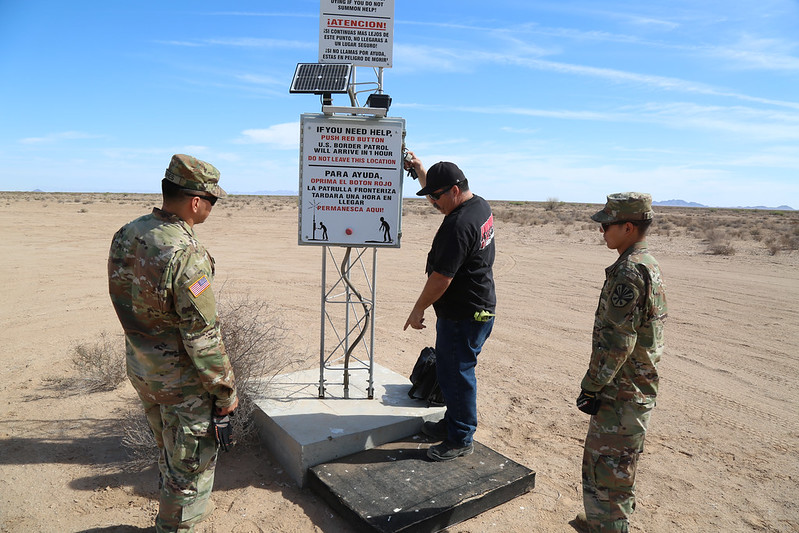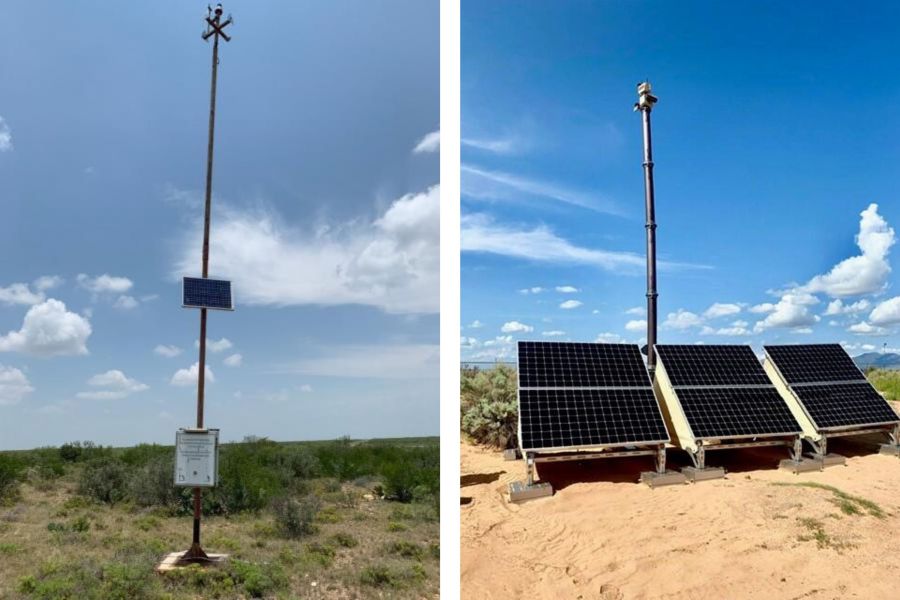(NewsNation) — In the desert of Texas, a blue light atop a tall, spindly tower pierces the night.
This rescue beacon in Presidio County, Texas, is among dozens added to the U.S. Border Patrol’s Big Bend sector, an area marked by desert, mountains and summer temperatures often over 100 degrees. The region has also seen an “unprecedented number of migrant rescues and deaths,” officials say.
In El Paso — another sector dealing with more migrants than it can handle — CBP installed 17 rescue beacons and hundreds of 911 placards, particularly for those trying to escape from human smugglers.
“Attempting to enter the United States illegally comes with inherent dangers,” El Paso Sector Chief Anthony Scott Good said in a statement Tuesday. “Transnational Criminal Organizations continue to exploit migrants for financial gain without any regard for their safety. The inhumane and deplorable treatment of migrants by criminal human smugglers and squalid conditions found in stash houses are testaments to the disregard these criminals have for lives of people they attempt to smuggle.”
These towers are not new to the border landscape, but an increasing number are being placed in response to the deadliest year ever for migrant crossings.
In some ways, these towers signify the deepening tension between the conflicting parts of an agent’s job description: stopping illegal crossings while rescuing the migrants that make them.
“People when they come into this country and do so illegally, that’s against the law,” Chief Patrol Agent Sean McGoffin told Newswest 9 last year. “But our job is to make sure we come in, treat them with the greatest respect. And oftentimes we see them in the most horrendous and distressful situations. And it’s heartbreaking for us … to see what the smugglers are doing by leaving them behind.”

Rescue beacons were an integral part of the more than 22,000 rescues Border Patrol agents made in fiscal year 2022, testified Border Patrol Chief Raul Ortiz before Congress earlier this year.
Their goal is to provide a lifeline to the immigrants and others facing dehydration, injury or other perilous situations in remote areas. At the base of the towers, signs in English, Spanish, Chinese and images tell the person how to call for help.
Solar-powered and 35-feet-tall, the towers can be seen for up to a mile. They are also equipped with GPS, so agents and medical professionals can know exactly where to arrive versus searching often thousands of square miles of difficult terrain.

“To ensure maximum effectiveness and accessibility, they need to be strategically placed, ideally … within range of cellular reception. Cell signals are the way that we are able to triangulate the locations of migrants and initiate rescues,” CBP Program Advisor Derek McVay said in 2020.
Some critics say there is limited evidence for how well these work at preventing deaths or if they’re in the right locations — in part because CBP may not have the data.
Just a year ago, the United States Government Accountability Office found that while “Border Patrol collects and reviews information at the field level … it does not have a plan to evaluate the program overall.”
Customs and Border Protection did not respond to multiple requests for comment on the current beacons being installed.
What is known is that migrant deaths continue to climb despite rescue efforts. More than 800 migrants died border-wide in the last fiscal year, according to internal government figures obtained by NPR. The number is likely higher, as many deaths are not reported or discovered.
Many experts and advocates say increasing the number of these beacons is not enough to solve what they see as a humanitarian crisis.
Experts point to the controversial Title 42 policy which stagnated the asylum-seeking process since the early pandemic years — pushing many people, including more seniors and children, to try crossing in increasingly dangerous places.
“What a lot of people don’t understand — one of the reasons many asylum seekers are crossing the border between ports of entry and making this dangerous attempt to cross is because (they are) unable to make (asylum) claims,” immigration policy expert Danillo Zak told NewsNation last year. “Legal crossing points don’t have the capacity to handle them.”





